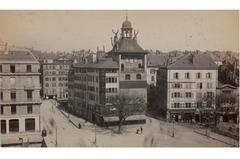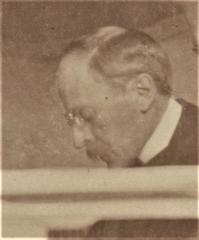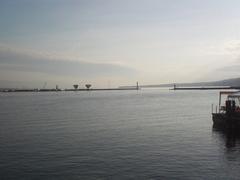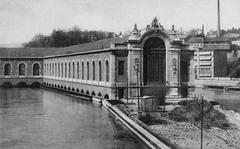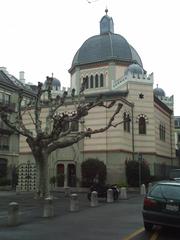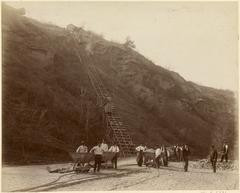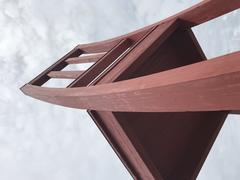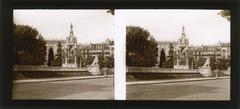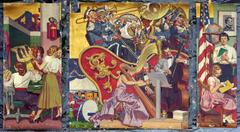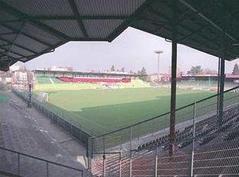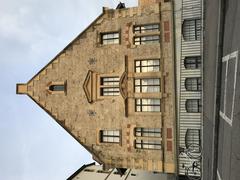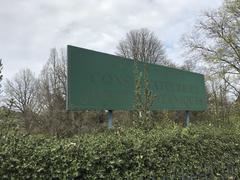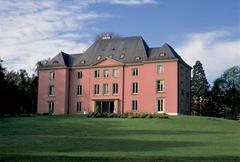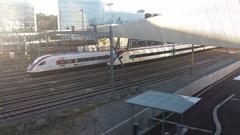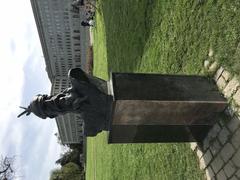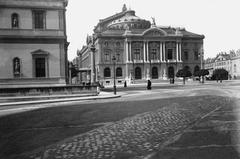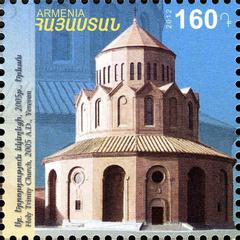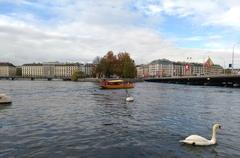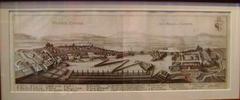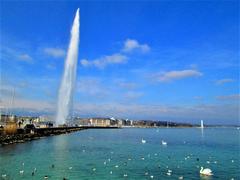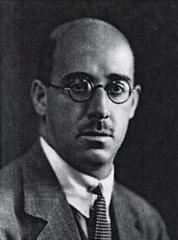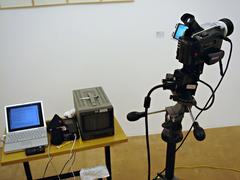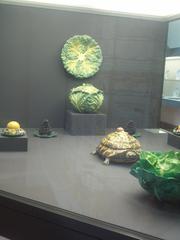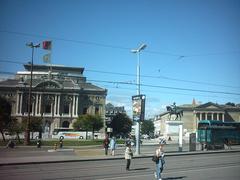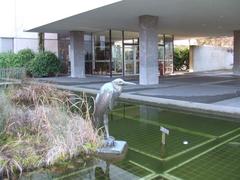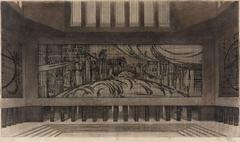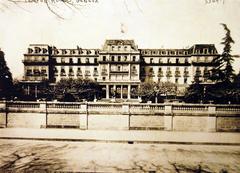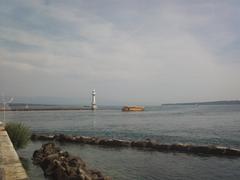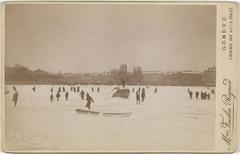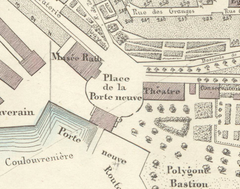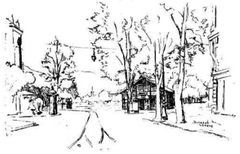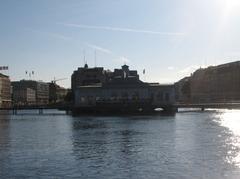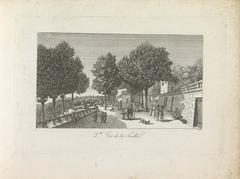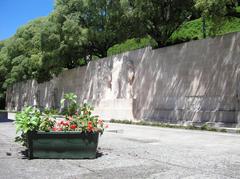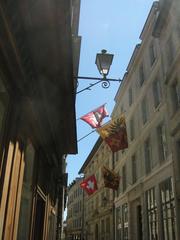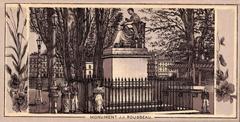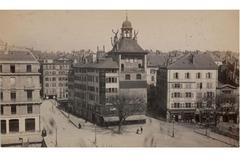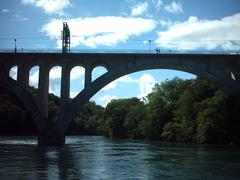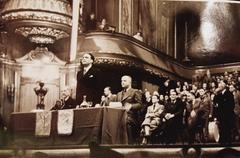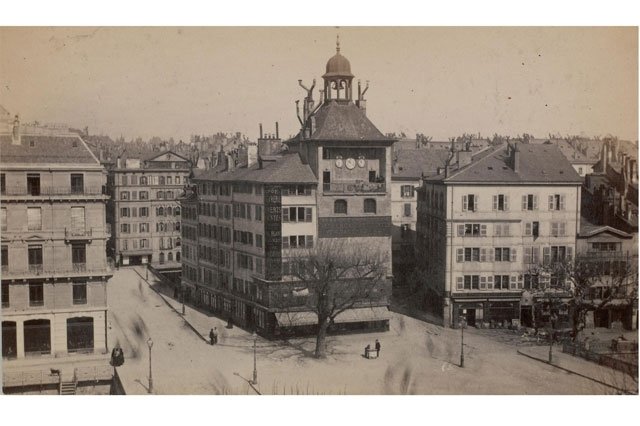
Tour de l’Île Geneva: Visiting Hours, Tickets, and Historical Significance Guide
Date: 03/07/2025
Introduction
The Tour de l’Île, perched on a small island in the Rhône River, is one of Geneva’s most enduring and emblematic landmarks. As the sole remnant of a medieval castle once tasked with defending a crucial river crossing, this tower offers a compelling window into Geneva’s layered past—from its medieval origins and strategic military importance to its present-day role as a cultural symbol. Although the interior of the tower is not open to visitors, the surrounding plaza is accessible year-round, providing panoramic views and a tangible connection to centuries of Geneva’s civic and cultural evolution (MySwitzerland; Geneva Tourism; audiala.com).
This guide provides a comprehensive overview of the Tour de l’Île’s history, practical information for visitors, nearby attractions, and tips for making the most of your experience at this storied monument.
Table of Contents
- Historical Overview
- Visiting the Tour de l’Île: Practical Information
- Nearby Attractions
- Frequently Asked Questions (FAQ)
- Historical and Cultural Context
- Cultural Significance
- Urban Connectivity and Social Role
- Preservation and Community Engagement
- Visitor Information: Tickets, Visiting Hours, and Accessibility
- Travel Tips: What to Bring and Best Times to Visit
- Facilities and Amenities
- Photography and Visitor Etiquette
- Events and Special Openings
- Safety and Security
- Visuals and Media
- References and Further Reading
Historical Overview
Origins and Strategic Importance
The Tour de l’Île (“Tower on the Island”) is the surviving vestige of a formidable medieval castle built between 1215 and 1219 under Bishop Aymon de Grandson. Strategically situated at the Rhône’s only crossing for centuries, the site’s significance dates back to pre-Roman times—famously, Julius Caesar destroyed a bridge here in 58 BCE to stop the Helvetii, marking Geneva’s debut in recorded history (MySwitzerland). The castle’s location was vital for defending Geneva against regional threats, notably the powerful House of Savoy, and for controlling trade routes linking northern and southern Europe.
Architectural Evolution
The tower exemplifies 13th-century military architecture, featuring robust stonework and reused Roman blocks (GE.ch). Over the centuries, the site saw significant changes:
- 1682: Installation of a large civic clock atop the tower.
- 1897–1898: Restoration and elevation by architect Edmond Fatio, following a public referendum.
- Modern Era: Continuous adaptation of the adjacent bridges, most recently in 2011 to accommodate Geneva’s tram network (NotreHistoire.ch).
Political and Social Transformations
In the 15th century, Geneva’s governance shifted from ecclesiastical to civic rule, marked by the rise of the Grand Council of Geneva. The Tour de l’Île witnessed these changes and survived the demolition of the castle in 1677 (GPSmyCity). Its enduring presence has made it a touchstone of the city’s autonomy, especially during the Protestant Reformation, when Geneva became a bastion of religious liberty (Hodinkee).
Preservation
Major restoration campaigns in the 19th and 20th centuries have stabilized and conserved the tower, ensuring it remains a focal point of Geneva’s heritage (audiala.com).
Visiting the Tour de l’Île: Practical Information
Visiting Hours
- Exterior Access: The exterior and surrounding plaza are accessible 24/7, year-round.
- Interior: The tower’s interior is generally closed, except during special events or citywide heritage days (Geneva Tourism).
Tickets
- Admission: No tickets or entrance fees are required to visit the exterior.
- Special Access: Tickets for rare interior tours or events can be purchased via Geneva Tourism or at local tourist offices.
Accessibility
- The plaza and pathways are wheelchair- and stroller-accessible.
- The site is reachable by public transport (tram and bus stops at Bel-Air and Molard).
- Cyclists can use the adjacent bike lanes and secure parking nearby (Geneva Tourism).
Guided Tours
- The tower features prominently in local walking tours, such as the “Heart of Geneva Tour” (Free Walk Geneva).
- Mobile apps like Audiala offer self-guided audio tours and historical maps (audiala.com).
Nearby Attractions
Within walking distance of the Tour de l’Île, visitors can discover:
- St. Pierre Cathedral: Geneva’s architectural and religious centerpiece (planetware.com).
- Place du Bourg-de-Four: The city’s oldest square, lined with historic buildings and lively cafés.
- Rue du Rhône: A luxury shopping street near the river (switzerlanding.com).
- Brasserie des Halles de l’Île: A riverside cultural venue and restaurant adjacent to the tower (audiala.com).
- Lake Geneva Promenade and Jardin Anglais: Scenic lakeside walks and Geneva’s iconic Flower Clock (The Crazy Tourist).
Frequently Asked Questions (FAQ)
Q: Can I enter the Tour de l’Île tower?
A: The interior is closed to the public; the exterior and plaza are always accessible.
Q: Are there guided tours?
A: Yes, several local walking tours include the tower (Free Walk Geneva), and mobile apps offer self-guided experiences.
Q: Is the site accessible for people with disabilities?
A: The plaza is accessible; the tower interior is not open and has no lift.
Q: Are there any admission fees?
A: The exterior is free to visit; special interior events may require tickets.
Q: What are the best times to visit?
A: Spring and summer offer the best weather and light for photography.
Historical and Cultural Context
Medieval Origins and Urban Evolution
The Tour de l’Île is a rare survivor of Geneva’s medieval fortifications, originally controlling a strategic choke point on the Rhône. Its robust stone architecture and defensive features reflect the city’s turbulent history and the constant threat from neighboring powers (Geneva Tourism).
Symbol of Civic Identity
Its silhouette is a fixture in Geneva’s urban iconography. During the Reformation, the tower became a silent witness to Geneva’s transformation into a republic and a haven for religious refugees.
Urban Integration
Modern Geneva has grown around the tower, integrating it into the urban landscape and surrounding it with shops, offices, and cultural venues (Geneva City Guide).
Preservation and Community Engagement
The Tour de l’Île is protected under Swiss heritage laws, with restoration projects ensuring its survival for future generations. Educational programs and interpretive panels help foster public appreciation and stewardship (Geneva City Guide).
Cultural Significance
Architectural Heritage and Artistic Inspiration
The tower is a textbook example of 13th-century military design, inspiring artists and writers through the centuries. Its image appears in paintings and engravings, and it is the subject of local legends.
Venue for Public Life
The plaza around the tower is a popular gathering spot, hosting cultural events, performances, and markets, especially during city festivals.
Urban Connectivity and Social Role
The Tour de l’Île functions as a central meeting point and orientation marker, linking the Old Town with Geneva’s commercial districts. Its accessibility and prominence make it a familiar landmark for locals and tourists alike.
Visitor Information: Tickets, Hours, and Accessibility
- Open: Year-round, 24/7 for exterior viewing.
- Cost: Free for exterior; interior only accessible during special events.
- Accessibility: Wheelchair- and stroller-friendly plaza; interior not open.
- Transport: Easily reached on foot from Gare Cornavin and by tram/bus (Bel-Air, Molard).
- Guided Tours: Available via local operators and apps (Free Walk Geneva; audiala.com).
Travel Tips: What to Bring and Best Times to Visit
- Footwear: Comfortable shoes for exploring cobblestone streets.
- Camera: For capturing the tower’s riverside setting.
- App or Guidebook: For enhanced historical context.
- Best Seasons: Spring and summer for pleasant weather.
Facilities and Amenities
There are no restrooms or cafés directly at the tower, but numerous options are available within a short walk in the city center and along Rue du Rhône.
Photography and Visitor Etiquette
Photography of the exterior is welcome. During rare interior openings, follow posted guidelines. As a protected monument, visitors should respect barriers and avoid climbing or entering restricted areas.
Events and Special Openings
Occasionally, the tower is included in cultural events such as European Heritage Days, offering rare interior access. Check the Geneva Tourism events calendar for updates.
Safety and Security
The area around the Tour de l’Île is safe, well-lit, and monitored. Exercise normal precautions and keep valuables secure in crowded areas (Free Walk Geneva).
Visuals and Media
High-quality images and virtual tours are available via official tourism sites and the Audiala app. An interactive map can help plan your route.
Summary
The Tour de l’Île is more than a medieval tower—it is a living symbol of Geneva’s resilience, strategic role in European history, and commitment to heritage preservation. Its riverside setting, accessibility, and proximity to other major attractions make it a highlight for any visitor. Enhance your experience with a guided tour or the Audiala app to delve deeper into Geneva’s rich past.
References and Further Reading
Ready to explore Geneva’s history? Download the Audiala app for expert-guided tours, interactive maps, and exclusive insights on the Tour de l’Île and Geneva’s other heritage sites. For the latest updates and travel tips, follow us on social media and subscribe to our newsletter!
